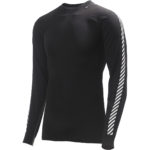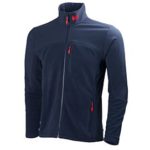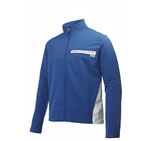Arctic Survival – Clothing
A layered clothing system is essential with extended cold weather excursions. Layering serves two purposes; it allows fabrics to serve different functions at various levels (i.e. wicking, insulating and cutting wind), and it allows you to regulate your temperature by adjusting the layers.
A non-layered system (such as wearing a big down coat over a t-shirt) can be convenient for short trips into the cold. This system is perfectly adequate for a stroll from your house in Tuktoyaktuk to fetch a carton of milk at the corner store. For longer trips, though, condensation will accumulate in the down, and the coat will lose its insulating capabilities.
On multi-day excursions in the cold, it is important to always dress on the cool side of comfort. This will reduce your rate of perspiration, and ultimately you will be warmer. People tend to overdress in the mornings when their metabolisms are slow and temperatures cold. The moment the trekking/skiing begins you will warm up quickly and, if overdressed, perspire profusely.
Layers
Layers provide three main functions which are detailed below:
Base Layer: This is the clothing worn next to your skin in the form of long underwear. The primary function of this garment is to wick moisture away from your skin so it dissipates as quickly as possible. Additionally the base layer adds a degree of insulation.
Never use cotton for your base layer. Cotton absorbs moisture and loses almost all insulating capacity. Polypropylene is superior to all other fabrics and is the material of choice for cold weather experts. Polypro is hydrophobic, meaning it repels water (like water off a ducks back), and will always feel dry.
Polypropylene should also be used next to the feet, hands and head using polypro socks, gloves and balaclavas or toques.
Helly Hansen produces high quality polypropylene long underwear in its Lifa Line. For the ultimate in wicking and insulating capabilities Lifa Prowool combines polypropylene with merino wool.
Mid/Insulating Layer: The insulating layer should utilize fabrics which are not severely compromised with moisture buildup. Both fleece and wool are well suited as insulators. They can be worn in layers, and should be easily removable so insulation can be adjusted.
Quality insulating garments include Helly Hansen’s line of fleece clothing. Helly Hansen is the company that invented pile fleece, and they remain leaders in this area. Their Baden wool jacket and pants are an excellent traditional alternative to fleece.
Outer Layer: The outer shell’s primary purpose is to cut the wind while maximizing breathability. It is important to note that outerwear in extreme cold conditions should not be waterproof or even heavily water resistant. All water in these temperatures is frozen and will not permeate clothing. On the other hand, the breathability of waterproof clothing is limited at best, and air circulation will be insufficient to allow internal moisture to dissipate. Some Arctic explorers have even used tightly-knit cotton for their outer windbreaker with good results.
During our own expedition to Siberia we used Helly Hansen’s Interface pants and jacket for our outer layer with excellent results. The Interface line has been replaced with the Rapid Jacket and Trek pants which utilize similar technology. This fabric effectively cuts the wind while allowing unsurpassed breathability.
Footwear
Even when temperatures are below -60 Celsius feet can remain comfortable with proper gear. Boots which include a thermal insert should be worn. Sorel is a popular brand, which produces this style of boot; however, these are designed only for mid-range temperatures. Baffin boots (a Canadian company) makes the warmest boots in the world which are surprisingly inexpensive. Their boots are rated to -100 degrees Celsius, and they are most frequently used by polar explorers.
Boots should be loose fitting to accommodate additional socks and allow good blood circulation. Thin polypropylene socks should be worn next to the skin followed by a vapour barrier. One or two thick insulating socks (such as wool) should be worn over the vapour barrier. With this setup your feet will always remain snug.
If you are using skis or snowshoes, you will need to have bindings that can accommodate your extra-large boots. Karhu manufactures ski bindings that work.
Hands
A thinner pair of Lifa gloves should be worn followed by fleece gloves. This is followed with very large, puffy mitts made from Polarguard, Primaloft or similar similar material. The inner gloves allow you to momentarily remove the outers when additional dexterity is required. Be sure to have maximum loft on the outer mitts, and your hands will remain warm.
Head
In temperatures below -40 degrees Celsius exposed skin will become frostbitten quickly when windy. This means every square inch, including your eyes, cheeks, and nose must be covered.
A Lifa polypropylene balaclava should be worn next to the skin followed by a fleece or wool balaclava. Outdoor Research makes a balaclava with mesh over the mouth which helps protect the lips against frostbite. Ski googles are worn over the eyes.
Before setting off into the cold it is a good idea to have a partner look you over to ensure no skin is exposed. Often you will be oblivious to a few inches of bare skin until the end of the day when it stands out, purple and frostbitten.
One problem with ski goggles is condensation. Moisture from your breath makes its way into the goggles and freezes onto the lens. This was a constant issue for us when we travelling through Siberia, and the situation worsened as temperatures dropped. Our only solution was frequent scraping. Be sure to look for a ski mask that has good ventilation, and try to vent your breath away from your eyes.



